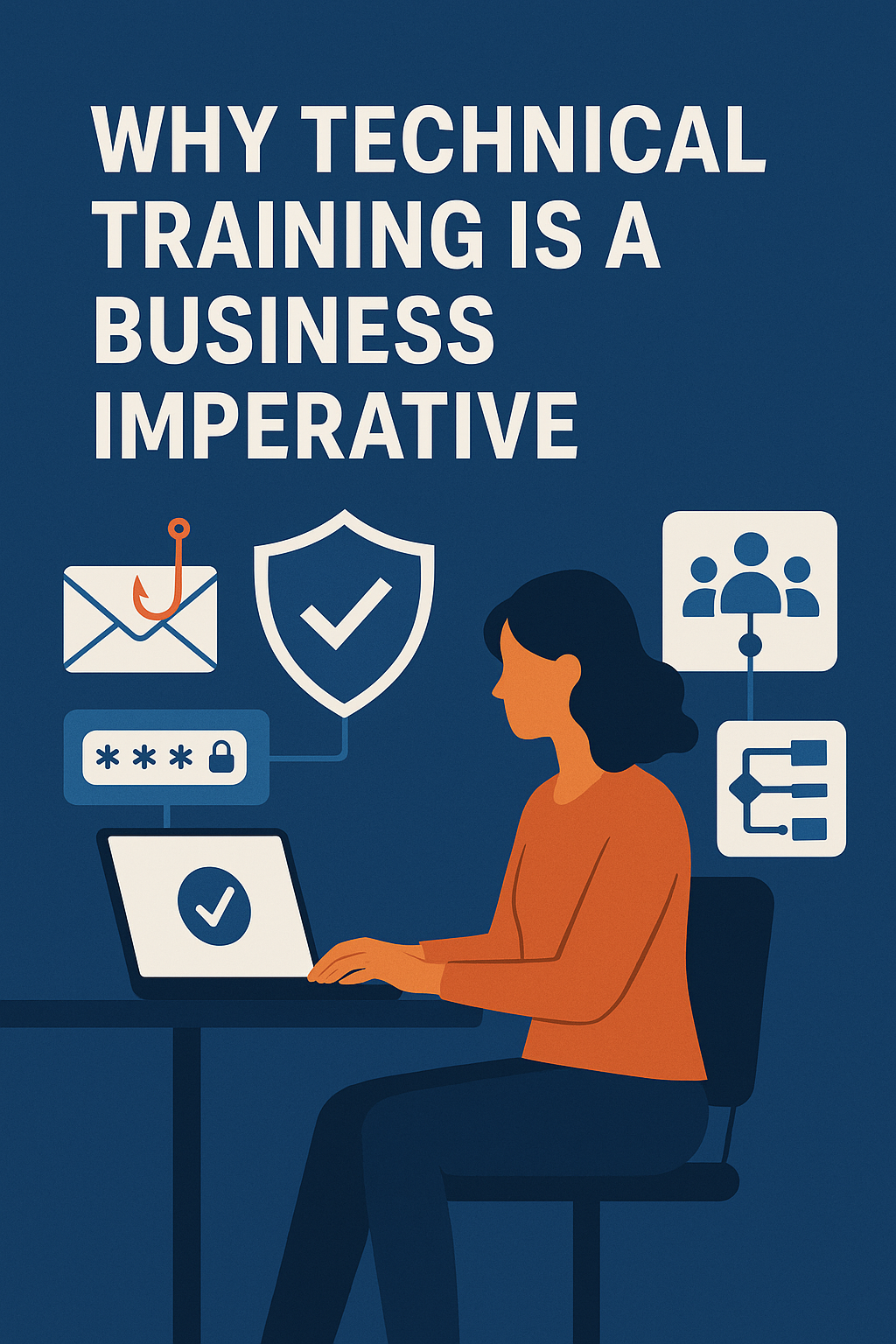In an era where cyber threats evolve as fast as the technology designed to stop them, organizations can’t afford to treat training as a one-time event. Ongoing technical training is essential—not just for IT teams, but for every employee who touches a device, opens an email, or accesses company data.
When staff are equipped with the right knowledge and tools, they become your first line of defense and your most productive asset.
Why Technical Training Is a Business Imperative
Cybersecurity and productivity are often seen as separate priorities. In reality, they’re deeply connected. A well-trained team is more secure, more efficient, and more confident in using the tools that drive your business forward.
- Reduces Risk of Breaches: Employees trained to recognize phishing, social engineering, and poor password practices are far less likely to fall victim to attacks.
- Improves Tool Adoption: Staff who understand how to use platforms like Microsoft 365, Teams, or your CRM effectively can automate tasks, streamline communication, and reduce errors.
- Supports Compliance: Regular training helps meet regulatory requirements and demonstrates due diligence in protecting sensitive data.
Key Areas to Focus Your Training
To maximize impact, your training program should target both security fundamentals and productivity-enhancing tools. Here are a few high-impact areas:
1. Cyber Hygiene for All Staff
Teach employees how to spot suspicious emails, use multi-factor authentication (MFA), and manage passwords securely. These basics are often overlooked but are critical to preventing breaches.
2. Secure Use of Collaboration Tools
Platforms like Microsoft Teams, SharePoint, and OneDrive are powerful—but only when used correctly. Training should cover secure file sharing, permission settings, and data classification to avoid accidental exposure.
3. Automating Workflows with Low-Code Tools
Empower staff to use tools like Microsoft Power Automate or Forms to streamline repetitive tasks. This not only boosts productivity but also reduces the risk of manual errors that can lead to security gaps.
4. Role-Based Security Awareness
Tailor training to different roles. For example, finance teams should understand invoice fraud tactics, while HR should be trained on secure handling of personal data.
Building a Culture of Continuous Learning
Technology changes fast. Your training strategy should be just as agile. Here’s how to keep it effective:
- Make It Ongoing: Monthly micro-trainings or quarterly refreshers keep knowledge current and top-of-mind.
- Use Real-World Scenarios: Simulated phishing attacks or hands-on labs make training more engaging and relevant.
- Track and Reward Progress: Use dashboards to monitor completion rates and recognize employees who go above and beyond.
Leadership’s Role in Empowerment
When leadership actively supports training initiatives, it sends a clear message: security and productivity are shared responsibilities. Encourage managers to set learning goals, allocate time for training, and lead by example.
Final Thoughts
Empowering your team through ongoing technical training isn’t just about avoiding cyber threats—it’s about unlocking the full potential of your technology investments. When staff are confident, capable, and security-aware, your organization becomes more resilient, more efficient, and better prepared for whatever comes next.








